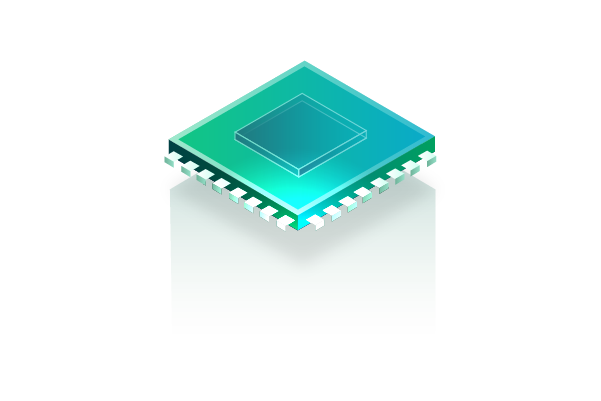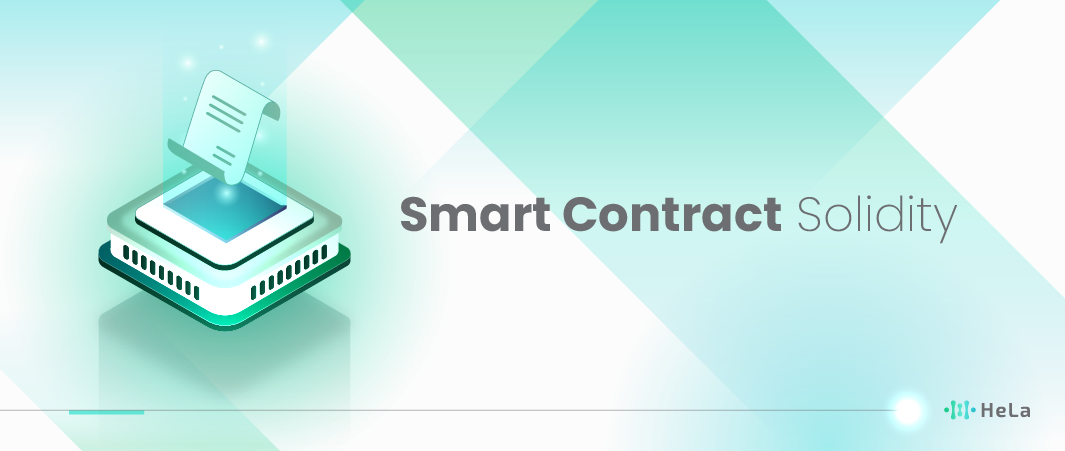The blockchain technology landscape is ever-evolving, with Smart Contracts at its heart, steering the revolution in digital transactions and agreements. Powered by Solidity, a dedicated programming language, these contracts are transforming how agreements are made, executed, and enforced in a decentralized manner. This article delves into the world of Smart Contract Solidity, exploring its significance, functionality, and the pivotal role it plays in crafting secure and efficient blockchain solutions.
Solidity’s introduction marked a paradigm shift in blockchain development, offering developers a high-level language specifically designed for creating complex contracts with ease. Its syntax, similar to JavaScript, makes it accessible to a broad range of programmers, fostering a rich ecosystem of decentralized applications (DApps). As we navigate through the nuances of Solidity, it becomes clear how this programming language has become the linchpin for developers looking to leverage blockchain technology’s full potential.
At its core, Solidity enables the creation of contracts that are not only tamper-proof but also automate the execution of agreements without the need for intermediaries. This capability opens up a plethora of opportunities for various sectors, including finance, real estate, and beyond. The following sections will guide you through the fundamentals of Smart Contract Solidity, best practices for secure contract development, optimization strategies, and the future outlook of this fascinating technology.
Understanding Smart Contract Solidity
Solidity is a key programming language tailored for developing smart contracts on blockchain platforms, such as Ethereum. With its syntax bearing resemblance to JavaScript, Solidity opens up blockchain technology to a broad spectrum of developers, even those with only web development experience. This section explores the structure and features of Solidity, underscoring its significance in the blockchain development ecosystem.
Smart contracts, self-executing contracts with the terms directly written into code, are foundational to decentralized applications (DApps). These applications run on a blockchain network, which offers a level of security and decentralization not found in traditional web applications. Solidity enables developers to craft these contracts with intricate logic and capabilities, fostering the creation of a wide range of applications, from decentralized finance (DeFi) platforms to non-fungible token (NFT) marketplaces.
Also Read: 12 Best Crypto Mining Companies to Explore in 2024
Understanding Solidity involves more than just grasping its syntax; it requires a deep dive into its unique aspects, such as smart contract lifecycle management, gas optimization, and interaction with the Ethereum Virtual Machine (EVM). The EVM is the runtime environment for smart contracts in Ethereum, and understanding its workings is crucial for effective Solidity development.
By harnessing Solidity, developers can not only implement secure and reliable smart contracts but also push the boundaries of what’s possible with blockchain technology. This section aims to equip readers with a solid foundation in Solidity, empowering them to contribute to the burgeoning field of blockchain development and the evolution of decentralized technologies.
Best Practices for Secure Smart Contract Development
When developing smart contracts using Solidity, prioritizing security is essential due to the immutable and transparent nature of blockchain technology. Smart contracts, once deployed, are difficult or impossible to alter, making any vulnerabilities potentially catastrophic. To mitigate these risks, developers are advised to adhere to a set of best practices designed to enhance the security and reliability of their contracts.
- Follow Established Coding Standards: Adopting coding standards like the Ethereum Smart Contract Best Practices can help developers avoid common mistakes. These standards cover naming conventions, best practices for function visibility, and patterns for secure contract development.
- Utilize Security Patterns: Implementing well-known security patterns such as checks-effects-interactions can prevent reentrancy attacks, one of the most common vulnerabilities in smart contracts. Other patterns like guard checks (requiring certain conditions to be true before executing functions) can also significantly reduce risks.
- Static Analysis and Formal Verification Tools: Tools like Slither for static analysis and MythX can identify potential vulnerabilities in smart contract code. Additionally, formal verification tools can mathematically prove the correctness of the contracts’ logic according to their specifications, offering a higher degree of security assurance.
- Comprehensive Testing: Develop a thorough testing strategy that includes unit tests, integration tests, and scenario-based tests. Use test frameworks specifically designed for smart contracts, such as Truffle or Hardhat, to simulate various conditions and attack vectors.
- Auditing and Peer Review: Before deployment, smart contracts should undergo rigorous auditing by security experts. Peer reviews can also uncover issues that automated tools might miss, offering another layer of scrutiny.
- Stay Updated with Security Developments: The landscape of smart contract security is constantly evolving. Developers should stay informed about new vulnerabilities, attack vectors, and security improvements. Participating in developer communities and attending relevant workshops or conferences can be beneficial.
- Use Established Libraries and Contracts: Where possible, use well-tested libraries and contracts (e.g., OpenZeppelin) instead of writing code from scratch. These libraries are maintained by experts and have undergone extensive security audits.
- Limit the Use of External Calls: External calls can introduce risks, particularly if interacting with untrusted contracts. Minimize their use and ensure that external dependencies are secure.
- Error Handling and Reverting Transactions: Properly handle errors and revert transactions when necessary to prevent unintended changes to the contract state.
By incorporating these best practices into the development workflow, developers can significantly enhance the security of their smart contracts. This not only protects the assets and data managed by the contracts but also helps maintain trust in the project and the wider blockchain ecosystem.
Optimizing Solidity Contracts for Efficiency

To delve deeper into optimizing Solidity contracts for efficiency, it’s essential to understand that efficiency in blockchain development isn’t just about speed—it’s also crucial for minimizing operational costs. Given Ethereum’s gas fee structure, which charges users for every operation executed on the network, optimizing contracts can lead to significant cost savings and improved performance. Here are some advanced strategies and considerations:
Use of Efficient Data Types
Choosing the right data types can significantly reduce the amount of gas required for contract execution. For instance, using `uint256` for variables that don’t exceed this size is less efficient than using smaller data types like `uint8` or `uint16` when appropriate, as smaller types consume less gas.
Storage vs. Memory
Understanding the difference between storage and memory in Solidity is crucial. Storage is persistent and more costly, while memory is temporary and less expensive. Whenever possible, use memory variables inside functions to reduce costs.
Minimizing State Changes
State changes (modifying variables stored on the blockchain) are expensive. Optimizing your code to minimize the number of state changes can significantly reduce gas costs. This can involve rethinking your contract’s logic to batch updates or using events for logging instead of storing data when feasible.
Loop Optimization
Loops can become gas-intensive, especially if they perform complex operations or interact with storage. Optimizing loop logic, breaking down complex iterations, or even avoiding loops when possible by leveraging more efficient data structures can help.
Code Reuse and Modularity
Creating modular contracts with reusable components can help in deploying smaller, more gas-efficient contracts. Instead of deploying large contracts with duplicated code, you can deploy smaller, interrelated contracts that call each other as needed.
Using Libraries and External Calls Wisely
Solidity allows for the use of libraries to perform common tasks. However, external calls to libraries or other contracts can be expensive. It’s essential to balance the use of libraries with the overhead of external calls. Sometimes, inline code might be more gas-efficient than an external library call.
Gas Profiling and Testing
Tools like Remix, Truffle, and Hardhat offer gas profiling features that help identify functions and operations in your contract that are gas-intensive. Regularly testing and profiling your contract throughout the development process can highlight opportunities for optimization.
Upgradable Contracts
Consider using proxy patterns for upgradable contracts to fix bugs or introduce optimizations without redeploying the entire contract, which can be gas-intensive. This approach allows for modifying contract behavior without changing its address or redeploying it.
Optimizing for EVM
Understanding how the Ethereum Virtual Machine (EVM) interprets and executes Solidity code can also guide optimization. Some operations are more gas-efficient than others at the EVM level. Inline assembly can be used for critical sections of the code, although it requires caution and deep understanding.
By integrating these strategies, developers can significantly enhance the efficiency of their Solidity contracts, reducing gas consumption and improving execution speed. This not only makes applications more cost-effective but also contributes to a better user experience and sustainability of the Ethereum network.
The Impact of Solidity on Blockchain Technology

Solidity, as the primary programming language for writing smart contracts on the Ethereum blockchain, has had a profound impact on the evolution and expansion of blockchain technology. This high-level language, designed for implementing smart contracts, has made the development of decentralized applications (DApps) significantly more approachable and flexible for developers. Before Solidity, the process of creating smart contracts was not only cumbersome but also limited in scope and scalability. The introduction of Solidity brought about a paradigm shift, allowing for the creation of complex, programmable contracts that can execute automatically under specified conditions.
The accessibility and versatility of Solidity have directly contributed to the exponential growth of the decentralized applications ecosystem. Developers now have the tools to build applications that operate on a trustless and decentralized network, reducing the need for intermediaries and central points of failure. This has opened up new possibilities across various sectors, with finance and real estate being particularly transformed. In finance, for example, Solidity has enabled the creation of decentralized finance (DeFi) platforms, offering services such as lending, borrowing, and yield farming without the need for traditional financial institutions. These platforms operate on automated smart contracts, ensuring transparency, security, and efficiency.
In the real estate sector, Solidity’s impact is seen in the way properties can be bought, sold, or leased through smart contracts. These contracts can automate the execution of agreements, manage escrow services, and even facilitate fractional ownership of properties. This not only simplifies transactions but also introduces a level of tamper-proof security and transparency previously unattainable in the traditional real estate market.
Moreover, Solidity has spurred innovation beyond these sectors, touching on areas like supply chain management, voting systems, and intellectual property rights management. By enabling the creation of DApps that can securely and autonomously execute contracts, track assets, and verify transactions, Solidity has paved the way for a more decentralized and efficient approach to managing and transferring assets.
Overall, the impact of Solidity on blockchain technology is profound and multifaceted. It has democratized access to blockchain development, broadened the applicability of blockchain solutions across industries, and continues to be a driving force behind the ongoing evolution of the decentralized web. As Solidity and blockchain technology continue to evolve, their potential to revolutionize even more sectors remains vast, signaling a future where decentralized, automated solutions become the norm.
Future Trends in Smart Contract Development

Exploring the future trends in smart contract development, particularly with Solidity, unveils a horizon brimming with potential for transforming how we interact digitally. Solidity, being the predominant programming language for writing smart contracts on the Ethereum blockchain, stands at the cusp of significant advancements. Here’s a deeper dive into the emerging trends speculated to shape the future of this domain:
Integration of Artificial Intelligence (AI)
One of the most compelling trends is the integration of artificial intelligence with smart contracts. This amalgamation could lead to the development of smart contracts that are not only self-executing and immutable but also capable of making decisions based on data analysis and machine learning algorithms. AI could enhance smart contracts with predictive capabilities, enabling them to automatically adjust their protocols in response to changing conditions or to optimize their performance. This integration promises to make digital contracts more dynamic and intelligent, paving the way for a new generation of decentralized applications (DApps) that are more responsive and adaptable to users’ needs.
Sophisticated Decentralized Applications (DApps)
The development of more sophisticated DApps is another key trend anticipated to take center stage. As Solidity and blockchain technology evolve, the scope for creating complex, multifunctional DApps widens. These applications could leverage smart contracts to automate a broader range of processes, from finance and logistics to governance and beyond. The potential for DApps to further disrupt industries lies in their ability to facilitate decentralized, transparent, and secure transactions without the need for traditional intermediaries.
Wider Adoption Across Industries
The continued evolution of Solidity and blockchain technology is expected to drive wider adoption across various sectors. Industries ranging from finance and healthcare to real estate and supply chain management are recognizing the benefits of smart contracts in enhancing security, efficiency, and transparency of digital transactions. As the technology matures and becomes more accessible, we can anticipate an increase in the number of businesses and organizations integrating smart contracts into their operations.
Enhanced Security and Privacy
With the growing concerns over data privacy and security, future developments in smart contract technology are likely to emphasize these aspects. Techniques such as zero-knowledge proofs and other cryptographic methods could be integrated into smart contracts to ensure data privacy while maintaining transparency and trust. This would be crucial in fostering wider acceptance and utilization of smart contracts by users who demand high levels of data protection.
Also Read: 12 Best Crypto Hardware Wallets to Know in 2024
Interoperability and Cross-Chain Solutions
Interoperability between different blockchain platforms is another area of focus that could shape the future of smart contracts. The development of cross-chain solutions would allow smart contracts written in Solidity to interact seamlessly with contracts and applications on other blockchain platforms. This interoperability is crucial for creating a more interconnected and efficient blockchain ecosystem, where assets and information can flow freely across different networks.
The future of smart contract development with Solidity holds immense promise, with AI integration, more sophisticated DApps, wider industry adoption, enhanced security, and interoperability being key trends. These advancements could further revolutionize the way digital transactions are conducted, making them more secure, efficient, and transparent. As we move forward, staying abreast of these trends will be vital for developers, businesses, and users alike, as they navigate the evolving landscape of blockchain technology.
Conclusion
As we’ve explored, Smart Contract Solidity stands as a cornerstone technology that fuels the growth and innovation in the blockchain space. Its ability to facilitate secure, efficient, and automated agreements without intermediaries revolutionizes numerous industries. Solidity’s intuitive syntax and powerful features empower developers to create complex decentralized applications, driving forward the era of digital transformation.
However, the journey of mastering Solidity and deploying secure smart contracts is ongoing. Developers must remain vigilant, adhering to best practices and continuously learning to mitigate potential vulnerabilities. The community’s collaborative effort in improving and innovating within this space is vital for the technology’s advancement and adoption.
Looking ahead, the future of Smart Contract Solidity is incredibly promising. As the technology matures and more industries recognize its potential, we will see a broader adoption and more sophisticated applications. The evolution of Solidity and smart contracts will undoubtedly play a pivotal role in shaping the future of decentralized technology, making digital transactions more secure, efficient, and transparent than ever before.
Disclaimer: The information provided by HeLa Labs in this article is intended for general informational purposes and does not reflect the company’s opinion. It is not intended as investment advice or recommendations. Readers are strongly advised to conduct their own thorough research and consult with a qualified financial advisor before making any financial decisions.

Joshua Soriano
I am a writer specializing in decentralized systems, digital assets, and Web3 innovation. I develop research-driven explainers, case studies, and thought leadership that connect blockchain infrastructure, smart contract design, and tokenization models to real-world outcomes.
My work focuses on translating complex technical concepts into clear, actionable narratives for builders, businesses, and investors, highlighting transparency, security, and operational efficiency. Each piece blends primary-source research, protocol documentation, and practitioner insights to surface what matters for adoption and risk reduction, helping teams make informed decisions with precise, accessible content.
- Joshua Soriano#molongui-disabled-link
- Joshua Soriano#molongui-disabled-link
- Joshua Soriano#molongui-disabled-link
- Joshua Soriano#molongui-disabled-link

